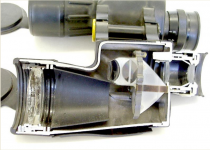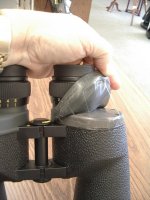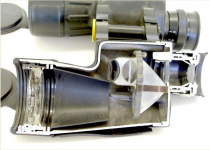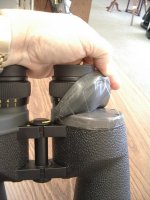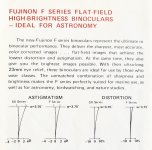WJC
Well-known member
Denny, thanks for the kind words. But please remember that while my test was performed 1) within 5 or 10 minutes, 2) used the same eye, 3) in a controlled environment, and 4) averaged the 3 median results, that only “debunked” the performance at a distance of 30 feet. As I pointed out in the book, the results MIGHT have been different had the target been moved back 10 feet or more. Having owned 2 Prostars, I still say edge sharpness was a little better than the Fujinons ... the test didn’t bear it out. Perception is reality to the masses. To the no-nonsense, scientific thinker it is not."There is no problem water proofing a porro binocular and the strongest; shockproof; water proof model
to pass through my workshop was a porro model."
What porro model was that?
Last week, my 13-year-old granddaughter was visiting. She looked out the backdoor at the moon and said, “Hey, Grandpa, look at the full moon.” I did. And seeing the tell-tale missing tiny sliver of moon that ran from 9 to 6 o’clock, I said, “Honey, the moon will be full tomorrow night.” I’m sure she thought I was nuts. But that was just the difference in the understanding of a 13-year-old girl and a guy who spent a large part of his life looking up—being 5’ 4” I did that a lot!
As far as Richard’s, “strongest, shockproof, waterproof”... he might have been speaking of “The BINOCEROS” ... the Swift Stormking, which is also half a dozen other models, including the short-lived Celestron Waterproof and the Tamaya BIFR, which I BELIEVE was manufactured by JB 2, Katsuma Kogaku Kikai Co. Ltd.
By the way, although “shockproof” is bandied about quite a bit, that too is a matter of perception. I put 3 kids through school repairing and collimating “shockproof” binoculars!
The first photo attached is of a 1990s MTR-SX. The second is of the so-called MTR-SX-2. As you can see, the exposed backplate is slightly curved and the rubber on the diopter ring is twice as wide and slightly curved.
My diamond saw did a job on that first one from Cloudy Nights, huh?!
Bill
Attachments
Last edited:




